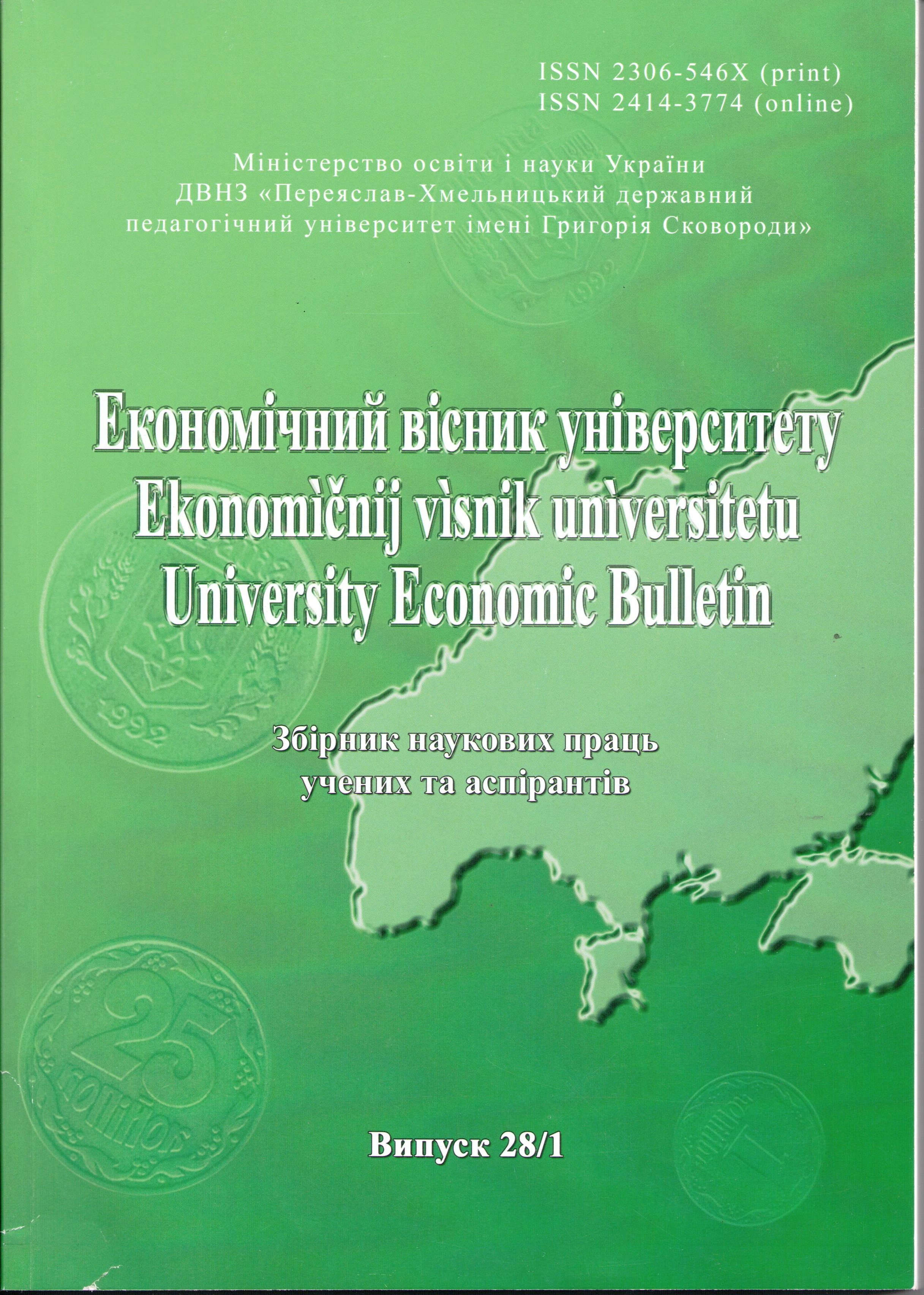Патоинституты, патоинституционализм и модернизация российской экономики
Patoinstituty, patoinstitutsionalizm and modernization of the russian economy
Author(s): Konstantin PavlovSubject(s): National Economy, Political economy, Socio-Economic Research
Published by: Університет Григорія Сковороди в Переяславі
Keywords: patoinstitutsionalizm; patoinstituty; Russian economy; modernization; pathological process
Summary/Abstract: Subject. Institutionalism as a scientific direction of economic thought emerged in the United States at the beginning of the XX century as a form of heightened monopoliticheskih display trends in the economy, contributing to the design and development of «antitrust» policy of their own country. To a certain extent opposed to the neoclassical institutionalism direction of economic theory. Purpose. At present, the author's opinion, it is necessary to consider the advisability of forming another scientific field within the institutional theory - the direction which we call «patoinstitutsionalizm.» As part of this scientific concept is planned to focus on the study of pathological processes in the institutional system and the institutions themselves (which can be called by analogy patoinstitutami). The use of this name due to the fact that the term «pathological process» derives from the Greek «pathos» meaning disease. Considering that in recent years at various levels of the social hierarchy frequent various crises that very painfully public, it appears that the development patoinstitutsionalizma is very important. Results. Strengthening of crises and imbalances associated also with institutional factors, both at the level of individual institutions and the functioning of the institutional system as a whole. Therefore, one of the most important aspects of patoinstitutsionalizma as a new scientific field should be the study of the relationship between the increasing manifestations of the crisis and the disproportionality arising from the socio-economic systems at different levels of the management hierarchy, on the one hand, and institutional factors, institutional direction, on the other hand. Another very important aspect patoinstitutsionalizma may be to study different types and kinds of pathologies of the institutional system, including in various institutes. In this regard, the crucial problem may be defining the criteria and quantitative indicators, based on which the Institute is different from the normal patoinstituta. This kind of problem is relevant for the institutional system as a whole (ie, to determine normal and abnormal institutional system as a whole). It is also obvious that patoinstitutsionalizm be linked to other, already established trends and concepts of institutional theory. So, one of the founders of the theory of institutional Veblen criticized the parasitic life employment rentierfinancial activities of the special owners, absenteistskoy forms of private property. Thereby it is substantially opposed this, if I may say so, idle the rest of the business (normal) entrepreneurs actually earn your business income. In other words, substantially at Veblen absenteistskaya ownership and its owner are regarded as a kind of pathology, which, unlike ordinary businessmen, hinders the effective development of the economy, including the effective development of scientific and technical progress. The validity of the above can be seen in contemporary Russia, where many of the oligarchs, who made huge fortunes in a short time through the use of natural resources, is essentially a national treasure of Russia, and therefore do not belong to themselves, used a significant portion of revenues in the development of production, and to satisfy their own whims. The fact that many Russian businessmen in an environment where physical and moral depreciation of fixed assets in many sectors of close to 100%, a significant part of their income spent on non-productive, non-productive consumption, and often do so abroad also shows abnormalities, pathological modern Russian the institutional system, including some government agencies that are its most important attributes. This fact is also the most serious and the most negative impact on the socio-economic efficiency of modernization and general effectiveness of NTP in Russia. In other words, absenteistskaya ownership - one of the major brakes modernization and technical re-equipment of the Russian economy. Thus, we can see that in the framework of the institutional theory have long studied various kinds of economic anomaly, pathology (although usually called otherwise) related to the impairment, deviations from the normal, default behavior of the various institutions or the institutional system as a whole. However, this does not happen often, from time to time, sporadically. Here we propose to focus on the study of such institutional pathologies that will reveal the general and particular in them, to reveal patterns and trends in their operation, and in the end help to carry out development directions, forms and methods of eliminating these pathologies (or at least it will help reduce the negative impact on their social and economic processes). It is advisable to distinguish, in our opinion, the pathology in the institutional system in the institutional environment and the institutions themselves (in this case, the latter can call patoinstitutami). So, for patoinstitutam include outdated institutions in need of replacement or upgrade; obsolete institutions that bring harm and impede the implementation of progressive measures, as well as the wrong institutions, hindering the development of socioeconomic processes, for example, the process of modernization of the Russian society. Conclusions. The article describes how patoinstitutsionalizma promising trend of institutional theory, defined the nature and allocation criteria patoinstitutov through the prism of the possibility of using these concepts in the analysis of the factors and features of the modernization of the Russian economy.
Journal: Економічний вісник університету
- Issue Year: 1/2016
- Issue No: 28
- Page Range: 126-133
- Page Count: 8
- Language: Russian

